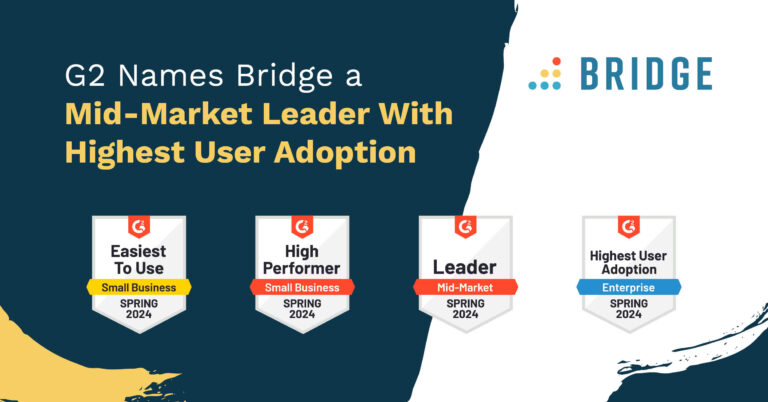You want your business to thrive—and as your employees are the heart and soul of your company, you want them to thrive too. That’s why putting their wellbeing at the very center of what you do should be a priority. The Deloitte Global Human Capital Trends study in 2020 bears this out. Of the nearly 9,000 survey respondents, 80% identified wellbeing as being ‘important’ or ‘very important’ to their organization’s success.
Everybody wins when you create a positive work environment for your people and put them at the center of your culture. Let’s explore why achieving this has never been more important.
What Is Wellbeing in the Workplace?
Wellbeing isn’t just about employee benefits such as paid time off. It involves all aspects of working life, including how healthy and safe employees feel in the workplace, their environment, and how engaged and satisfied they feel with their work. Your strategy for wellbeing needs to be all-encompassing and focus on different aspects, both inside and outside of the workplace.
An employee wellbeing strategy should include the following domains:
1) Mental and Physical Health
Employee health concerns not only measures to support the physical health of your employees with practices like health checks, insurance, and safe working, but also mental health awareness. For example, managing stress in the workplace and having line managers trained in having conversations with employees about their mental health is an important factor. Initiatives to support both physical and mental health are crucial for wellbeing.
2) Trust and Relationship Building
Are employees given a voice and involved in decision-making? Organizations should be having genuine conversations with their people through managers and should foster teamwork, healthy relationships with co-workers, and respect.
3) Good Practices and Work-Life Balance
You should take the initiative on good work practices and have an inclusive working environment, effective people management policies, fair pay, and a good work-life balance. Good work practice should also mean clear communication with your employees on business decisions, the reasoning behind them, and their involvement in any change management initiatives you’re undertaking.
4) Personal Growth and Career Development
Your employees want rewarding careers, and it’s down to you to offer them the opportunities they’re looking for. You need performance development plans in place if everyone is to get the most out of the relationship. Making their work environment a richly rewarding one fosters your employees’ wellbeing through personal growth. But beyond performance management, employees should be encouraged to learn continuously, innovate, and forge positive relationships within the company.
5) Healthy Lifestyle Choices
In conjunction with your workplace health policies, you can encourage employees to live a more active and healthier lifestyle. Physical activities such as fitness clubs should be incentivized, and for employees based in offices with kitchens, healthy snack choices can be provided.
6) Well-Defined Values and Principles
Your employees want clarity and your values and principles should be clearly communicated by your leadership. A definitive mission statement is key and your ethical standards on corporate social responsibility and diversity and inclusion are also important aspects of your business that employees need to be aware of. In passing along your values in this way you build organizational trust.
RELATED READING | ‘Employee Burnout Is Rising: Here’s How to Turn Back the Tide’
7) Financial Wellbeing and Support
Financial wellbeing means giving your people security. Offering competitive pay above the living wage is one step you can take, offering your employees flexible benefits and financial support is another. Freeing your employees from the distraction of poor pay is also a good way to support their mental health.
MORE TO EXPLORE | ‘Putting People First: Why Creating an Employee-First Culture Matters’
Does Employee Wellbeing Impact Performance?
A 2022 report polled 2,201 UK employees to better understand the state of wellbeing in the workplace. Their findings show that over 40% of employees rate their workplace performance as ‘average’ or below. The most frequently selected issues impacting performance are tiredness (59%), high stress (28%), and poor mental health (21%).
Employee wellbeing has a direct impact on performance. If your people are at their best, they’re in good health, and they’re feeling positive about their work and company, it’s more likely that they’ll be performing at their best.
How to Improve Wellbeing in the Workplace?
Investing in employee wellbeing requires a commitment to change at all levels. Here are some of the steps you can take:
1) Get Your Leaders on Board
Your leaders are key champions of new causes and initiatives in your business—they’re the ones capable of executing change and promoting it throughout your company. Your leadership all need to be on the same page with your company’s commitment to wellbeing and they need to both communicate and drive the changes that your employees want to see.
2) Recognize and Reward Hard Work
Recognition can give your employees a sense of accomplishment and achievement. Remind your people that they’re valued and appreciated and that the work they do has meaning. This can be as simple as highlighting their efforts during a one-on-one, a message to highlight good work, or a shoutout during a meeting. Find out how they like to communicate best and adapt.
3) Encourage Your People to Keep Talking
Managers are the driving force behind your communications strategy. They’re the ones who can personally connect with your people, check in regularly to give them guidance, and promote good wellbeing practices. As part of their regular one-on-one meetings, your managers should set some time aside to check how people are coping, whether they need any additional support, and that they’re satisfied with their work. Training managers in health awareness, to spot signs of stress, and how to support their people means they’ll be well-equipped to help.
YOU MAY ALSO LIKE | ‘How Connecting With Employees Helps Strengthen Organizational Resilience’
4) Provide Mental Health and Wellbeing Resources for Employees
If your employees find that they need mental health support, that support should be quickly and easily accessible. You could, for example, offer a platform with wellbeing resources, stress-management training programs, and access to confidential third-party support hotlines or live chat services.
5) Provide Mental Health and Wellbeing Resources for Employees
Regular, anonymous pulse surveys are a powerful way to gauge wellbeing, as they allow you to understand how employees feel in the moment. But they’re only useful if you use the data to make swift, meaningful changes. To understand how your employees feel, ask questions about different aspects of working life that play a role in their wellbeing such as the culture, leaders, managers, colleagues, and their workload. This will give you a better sense of wellbeing at your organization, allow you to spot any patterns, and make changes.
Once a plan has been made and themes identified, action points should be shared with managers who can communicate these points with their teams and start to make changes.
FURTHER READING FROM THE BLOG | ‘3 Ways to Measure Employee Engagement’
Can You Cultivate Optimism in the Workplace?
By listening to what employees want and need in the moment, employers can create an atmosphere of mutual benefit that attracts and retains devoted, long-term employees. Often, there’s a lot of emphasis placed on the exit interview to connect with people for feedback, but questioning in such meetings are usually focused on why employees choose to leave, rather than on what could have motivated them to stay.
To address this need, some organizations use stay interviews. This format is designed to help organizations understand the positive factors that drive wellbeing and engagement, make the workplace more attractive, and provide insight into the parts of a culture that can be used to improve wellbeing. Usually conducted between a manager and employee, stay interviews provide employees the chance to share what makes them stay, what improvements could be made, and whether they enjoy the work that they do. For maximum impact, they should be conducted annually, as this gives organizations enough time to gather feedback and make changes.
How Can Bridge Help?
For organizations to put employee wellbeing at the heart of their culture, they need the right tools. Bridge’s Employee Engagement Surveys give your people a say in shaping their workplace, while helping to drive meaningful conversations with managers, and bringing insights and action plans to leadership.




